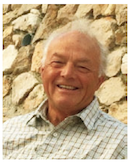Editorial

The Canadian involvement in the international effort to improve statistics education was stimulated in 1986 with ICOTS2, the Second International Conference on Teaching Statistics. This conference was held at the University of Victoria, organized by Roger Davidson and Jim Swift.
1986 was also the year that the SSC launched the newsletter Liaison. Christian Genest was the first Editor of Liaison and even did the translation for the rst bilingual edition. My own contribution to that rst edition was a brief article that expressed my concern with the overbearing in uence
of mathematics culture on the development of statistics education. Weldon (1986). I was urging statistics curriculum developers to assess potential content of statistics courses based on its usefulness to researchers, rather than its mathematical generality. I felt that many problems with the curriculum of undergraduate statistics courses were based
on an unfortunate historical relationship of statistics to mathematics. In retrospect I was sorry I did not contribute to ICOTS2, where my suggestions might have had a wider audience.
Two in uential presentations documented in the 1986 ICOTS2 proceedings were keynote talks by Jim Zidek and Terry Speed. I was clearing out my bookcase recently when I came across the ICOTS2 proceedings, and re-read these keynote presentations. The lessons there are still relevant today, suggesting either that these speakers were way ahead of their time, or that our professional teachers of statistics are rather slow to adapt, or perhaps both!
Jim Zidek’s talk “Statistication: The Quest for a Curriculum” outlines in

detail the difficulty we were having as a result of inroads from other disciplines, like computing science, engineering and meteorology. Zidek (1986). He suggested we needed to broaden the scope of our teaching - not only Bayesian approaches, but more simulation, graphics, and data analysis. My impression is that undergraduate textbooks are still a bit light in these areas.
Terry Speed’s “Questions, Answers and Statistics” presented by Cleveland (1993). Part of adapting to a broader scope for the discipline (as Zidek recommended) and a focussing on answers to questions (as Speed recommended) is to allow for creativity in the analytical methods of professional statisticians, especially in those areas of application that are new to our discipline.
One way to allow for creativity in statistics education is to adopt a project- based approach. See Weldon (2014). To achieve this with our large undergraduate classes is a challenge, but perhaps it is what we should be aiming towards in our modernization proposals.
References
Cleveland, W. (1993) Visualizing Data. Hobart Press.
Speed, T (1986) “Questions, Answers and Statistics”. ICOTS2 Proceedings.
Weldon, k.L. (1986) “Statistics: Mathematical Specialty or Separate Discipline?” Liaison (1986) Vol. 1 No.1.
Weldon, k.L. (2014) “Experience Early, Logic Later”. In Topics from Australian Conferences on Teaching Statistics, OZCOTS 2008-2012.
Zidek, J (1986) “Statistication: The Quest for a Curriculum”. ICOTS2 Proceedings.
